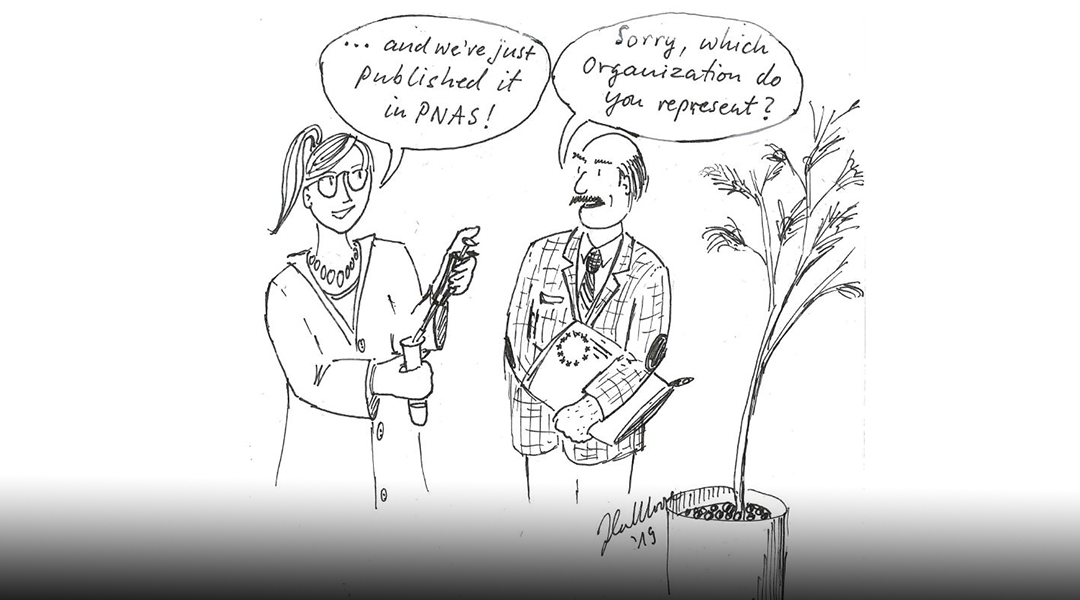In most realms of human society, influence is exercised via group activities: that is by relatively large numbers of people supporting a concept or voicing a desire.
Thinking back to a course on leadership in which I participated, I realize that there might be a parallel here with another concept of communication and decision making: I’ll never forget the so-called “iceberg” diagram showing the proportions of logic and emotion that go into making decisions—often ones of great strategic importance.
The tip of the iceberg represents factual, logical, and reasoned argumentation; the larger part underwater is the realm of emotions! Hence the saying, “you have to win their hearts and minds”.
The motivation for forming a group in support of an aim is arguably largely emotional—particularly so in the communication of matters of interest to the general public; I wager that in most groupings it is an “esprit de corps” rather than universal and complete understanding of facts that unites the members.
Politicians, as we witness almost daily, are emotional animals capable of backing up supposedly “common sense” rationale with almost heart-wrenching, gut-wrenching shows of passion—be they of love or hate. If nothing else, a politician must be capable of rousing speeches. And to be roused by anything, most politicians need a large group of rousers; such a grouping simply oozes emotional engagement, and that’s a source of great power if used correctly, and great danger if ignored.
This is the principle that governs politics, the economy, and culture; it’s not the principle that governs the advance of scientific knowledge, and in the public domain, scientists can often feel as if the audience can’t see or hear the plain facts properly.
This is the part that many scientists find so desperately frustrating; they can publish any number of papers with findings, hypotheses or revelations of something new. Their publications, once through peer review, can be cited immediately. And by and large, sound, peer reviewed research is, indeed, cited. In this way, it immediately starts contributing to the advance of science. Merely via publication, an individual’s work can have great influence in a given field, its direction, and methods.
Many results of research are of high relevance to applications, public policy or economic policy; but a single researcher is not recognized by most politicians or policy makers as an authoritative source of anything. Politicians work on strength in numbers, which is disturbing for scientists, because simply the number of supporters doesn’t necessarily say anything about the truth or significance of the message that they’re supporting. The whole concept is rather at odds with the scientific method, and researchers are not only often ill-prepared for communicating with non-scientists on important matters, but they are even less well-prepared to do it en masse.

To better affect science policy, scientists must rely on their strength in numbers. Photo by Marco Oriolesi on Unsplash.
A good case in point is the “Swiss referendum” on the continued use of genetic modification technology sparked by the “Genschutzinitiative” (initiative to protect genes) in 1998, a process that very nearly ended in disaster for science. Researchers were badly prepared and frightened. And in line with my previous observation, it was this emotion of fear that forced them to unite and talk about their research as groups—interestingly, not only consisting of biologists and biotechnologists.
Now it is the horrifying environmental catastrophe of global warming that is haunting us. However, possibly because it isn’t as acute and personally threatening to career prospects as the Swiss referendum of 1998, this terror doesn’t seem to be stimulating the same kind of collective behavior amongst researchers. Yes, there are certain groupings, but others are much more prominent, and have long since won the hearts and minds of politicians and the media.
As well as listening to groups representing sectors of the economy, politicians seem to be paying attention to a particular ensemble representing a significant part of the future electorate: Fridays for Future.
Now, the brave young FfF people need to be joined by scientists—preferably groups of scientists, which indeed, is beginning to happen with the newly-formed Scientists for Future—who inform them with scientific arguments to further support their campaign, and give them scientifically reasoned ideas for technological and social change.
I explicitly encourage social scientists; they at once understand the dynamics of emotion in the public arena, and consumer behavior. Technology in isolation solves nothing but economic challenges unless it’s accompanied by the right behavior. Via multi-media large-scale advertising, car manufacturers can continue to “inform” potential customers about the next, even larger, SUV to buy (see, for example, an incisive article on this by George Monbiot), hence influencing consumer behavior; so why can’t groups of natural scientists and social scientists assert a few scientifically supported truths and long overdue shifts in value systems?
Lately I’ve written a lot of emails to politicians and policy makers, describing scientific reasoning on the future of sustainable energy and mobility. If you do this as an individual, you might receive a response around 50% of the time—and that’s nice.
Unfortunately, that’s all it is. The answer often explains and justifies the current policy or practice related to your concerns or criticisms, but don’t raise your hopes. I don’t get the feeling (emotion) that the reasoning (factual) in my emails has furthered or changed the development of policy. It’s just not possible for politics to work that way, and we must cotton on to that. The take-home is this: agree on the strength of your numbers (scientific proof, facts, etc.) with a group of other researchers, then gather your strength in numbers — for example via a simply-worded petition or physical representation.
Then get emotional about your message, because in the end, that’s what counts.
Andrew Moore
Editor-in-Chief of BioEssays

















